NRL 2019 pre-season power rankings: In the valleys of the promised land
In the third instalment of the 2019 NRL pre-season power rankings Nick Campton looks at two teams poised to make a run up the ladder and two more clinging on to their time at the top.
Put the Kookaburra away and hail the comeback of the Steeden, after a long summer the return of rugby league is almost upon us.
When Melbourne host Brisbane next Thursday night the speculation and prediction will be over and all the pre-season tips will be proven to be genius, stupidity or something in-between.
Just about every team has something to like, enough of the good stuff for their fans to start dreaming of finals football but there can be only eight, and then only one who will drink from the keg of glory come October.
These rankings could change by the time the dust settles after Round 1 but as it stands this is where the 16 teams sit in terms of roster strength, potential positional changes and the impact of new recruits and coaches right now.
PART 1: The cellar-dwellers — Bulldogs, Sea Eagles, Eels, Titans
PART 2: The teams on the fringe — Tigers, Raiders, Knights, Warriors
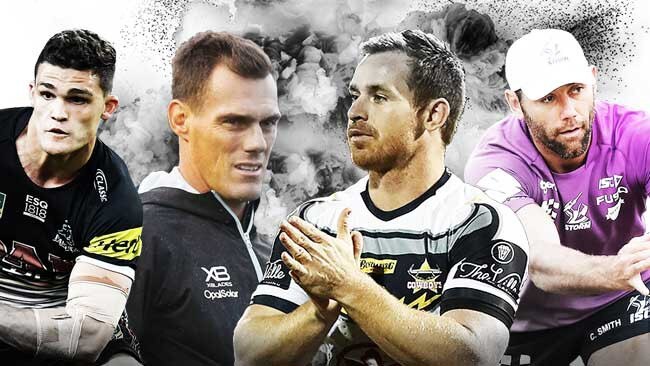
8TH — CRONULLA SHARKS
2018 finish: 4th
If a coach is around the same team for long enough that team becomes an instrument of his philosophy on the game and at the time of his dismissal, Shane Flanagan was the second longest-serving coach at a single club in the NRL behind Craig Bellamy.
The 2016 premiership will always be the jewel on Flanagan’s coaching resume but his overall record is exceptional. Apart from 2011, his first full season as a top grade coach, Flanagan’s Sharks never won less than 10 games in a season and they never missed the finals.
Over the past three seasons Flanagan’s Sharks won 52 regular season games, second only to Melbourne’s 55. Flanagan did all this while retooling the roster that won the premiership — Chad Townsend is the only spine player returning from their team on grand final day, Sosaia Feki is the only outside back still at the club and three of the eight running forwards have also moved on.
Building a champion is tough enough, rebuilding on the fly while remaining competitive is close to impossible. Whatever else Flanagan did, his record as coach is unimpeachable.
Only John Lang has coached more games for the club and while Cronulla may claim premierships in the future winning their first title is something that can only happen once. Flanagan is a titanic figure in the club’s history and now he’s gone.
Over Flanagan’s tenure Cronulla developed certain common characteristics, no matter who was playing. Flanagan’s Sharks were always built around strong forward packs, they were always tough to the point of ornery, they were comfortable playing grinding, gritty football and they weren’t afraid of incurring the wrath of the referees to get what they wanted. They were blood and bone and to hell with you if you didn’t like it.
There were variations of these teams — more than once Flanagan’s Sharks struggled with creativity and firepower and the year they had both in spades they won the competition — but the baseline was usually pretty solid.
We can expect that to remain relatively similar in 2019. Morris has been an assistant under Flanagan since he retired and the likes of Andrew Fifita, Paul Gallen, Wade Graham, Matt Prior and Townsend have been in first grade long enough to know how to keep these things going.
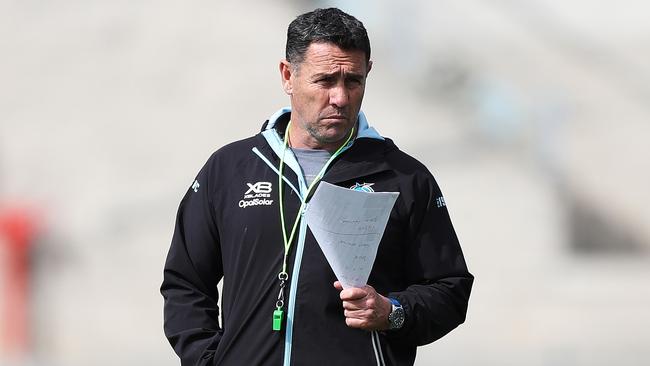
The question is more long term — once the old soldiers age and retire, will Morris be as astute with his roster management as Flanagan? Throw in the reduced salary cap the club will operate with for the next two seasons and it makes the job all the more difficult.
In more immediate concerns, Cronulla already look extremely different to the team that marched to the preliminary final last year.
Matt Moylan, who was a fullback then a five-eighth, is a fullback again and his style could not possibly be more removed from the power and speed Valentine Holmes offered.
Moylan is a polarising player but he is better suited to fullback than five-eighth. While his running game and kick returns can leave something to be desired his ball-playing as a second or third receiver is very strong and he should be able to combine well with Johnson.
As a like for like replacement for James Maloney, Johnson is a far more suitable choice as a half than Moylan and his pre-existing combination with Townsend makes the transition easier.
Johnson’s ability and skills are unquestioned and the circumstances of his exit from the Warriors resulted in a host of misinformation and incorrect perceptions springing forth.
A change of scenery and a point to prove make him all the more dangerous and he’s already one of the best attacking halves in the competition. Recruiting him was an absolute no-brainer and the smartest bit of business the Sharks have done since they signed Maloney.
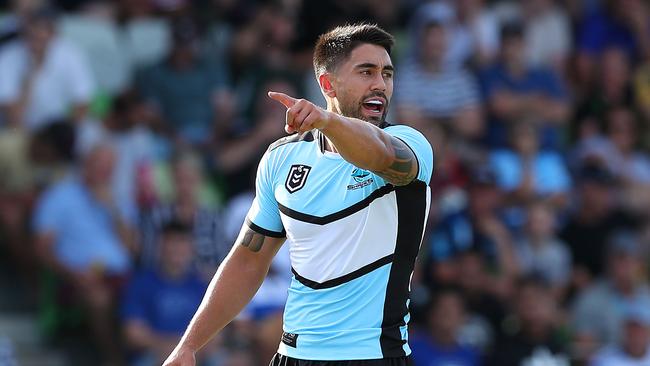
A dynamic and versatile spine paired with a strong set of middle forwards is usually a recipe for success but the Sharks have enough holes in their roster to make a top four return far from an automatic proposition.
Josh Dugan’s club form as a centre has never really inspired and during his first season with Cronulla he failed to impress. Given the departure of Holmes and Jesse Ramien, Cronulla need Dugan to stand out as a strike weapon if they’re to challenge for the premiership. Feki is an honest grinder and a good finisher but he’s hardly a gamebreaker and Sione Katoa’s first grade career is still in its infancy.
God bless Josh Morris, one of the toughest centres of the NRL era, an Origin veteran and a player who is always smart, capable and cunning, but the old legs just can’t go like they once did. Morris hasn’t recorded double figures in line breaks since 2015 and last season he broke just 34 tackles, the second lowest mark of his career.
The former Bulldog will still be good for the Sharks as a defender and he can still finish a chance if he’s given one but the days of Morris first and daylight second may be gone.
These are not crippling blows. All four members of the Sharks backline are good enough to finish a chance once it’s presented and their spine is good enough to create those chances. They may inject the speed they need by the middle of the season if Bronson Xerri makes his debut at some point.
The great unknown is still the new coach. In past years, when times were tough, the players could trust in Flanagan to lead them out, to stick with the players who had served him so well or make the changes required.
He had earned that trust through his success. Morris comes in with a blank slate, coaching players who might be too old to change, but why on earth would they need to? More of the same will be enough for Cronulla to stay relevant in the premiership race this season and Johnson just might be good enough to make them more than that. The more interesting will come down the line, when Morris is replacing the old and building anew, but that is tomorrow’s problem and today the Sharks can still abide as they always have, inflexible, unyielding and ready to drag you down into a gutter war they know they can win.
Best XVII: 1. Matt Moylan 2. Sione Katoa 3. Josh Dugan 4. Josh Morris 5. Sosaia Feki 6. Shaun Johnson 7. Chad Townsend 8. Andrew Fifita 9. Jayden Brailey 10. Matt Prior 11. Wade Graham 12. Kurt Capewell 13. Paul Gallen Interchange: 14. Blayke Brailey 15. Aaron Woods 16. Jayson Bukuya 17. Briton Nikora
Stat of note: John Morris played alongside six current Sharks in his final season with the club in 2014
The big question: How do the Sharks fit in the young fellas?
In the last season of the under-20s in 2017 Cronulla were minor premiers by a clear seven points and only lost four regular season games all year. The baby Sharks didn’t go on to win the premiership but the best of that time — William Kennedy, Katoa, Kyle Flanagan, Billy Magoulias and Blayke Brailey — are now all pushing for first grade spots.
The Sharks have put tremendous effort into their junior development in recent seasons and also have Briton Nikora, Xerri and Cruz Topai-Aveai ready to go. A drastic and fundamental shift will soon be upon Cronulla — Paul Gallen is the oldest man in the NRL, Luke Lewis has already retired and Matt Prior turns 32 this year.
Getting the Sharks ready for the transition will be an ongoing task for Morris and it starts right now.
Breakout player: Bronson Xerri
Still only 18, Xerri’s speed gives him the ability to make an immediate impact should he make his first grade debut this season and it’s easy to see Morris pitching him into the fray early. He might be young but as his performances in the trials showed he’s ready for action.
Another rookie to keep an eye on is fullback Will Kennedy — given Moylan and Dugan are ahead of him in the pecking order he’s less likely to play first grade but the Bathurst junior is a player of immense potential. A capable ballplayer and a good support runner who loves lurking around the middle of the ruck, Kennedy is a first grader of the future.
7TH — PENRITH PANTHERS
2018 finish: 5th
Last season Penrith had some ups and downs but when they managed to pull it all together they looked like premiership material. It didn’t quite go that far — they were knocked out in the second week of the finals — but the future seemed bright in the west.
In 2017 Penrith had some ups and downs but when they managed to pull it all together they looked like premiership material. It didn’t quite go that far — they were knocked out in the second week of the finals — but the future seemed bright in the west.
In 2016 Penrith had some ups and downs but when they managed to pull it all together — you get where I’m going with this.
So much has happened to the Panthers since Ivan Cleary exited at the end of 2015 that the roster he returns to is almost unrecognisable. Of the 28 players who pulled on the black jersey that season just 11 remain. Matt Moylan was the shining captain of the west’s golden future until he wasn’t anymore. Bryce Cartwright was throwing the ball around like Magic Johnson until he wasn’t anymore.
The club has churned through dozens of players, rolled 15 debutants out of the junior machine Phil Gould has built, undergone another coaching change, signed James Maloney and punted Trent Merrin and all the time the results stayed the same.
Fourteen wins in 2016, 13 wins in 2017 and 15 wins in 2018. Sixth, seventh and fifth, each season capped by an exit in the second week of the finals to a team that lost in the third week.
The wheels have spun and spun until they’re fit to fall off and Penrith are in the same place, still yet to match Cleary’s best season at the club in 2014, when he took an injury-ravaged team to the preliminary final.
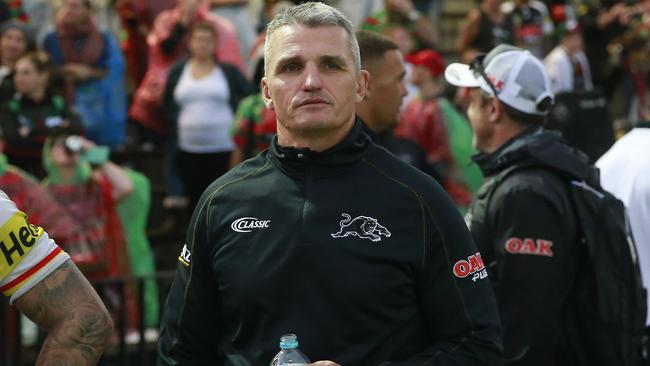
The true process of Anthony Griffin’s dismissal is known only to the former coach and the Penrith powerbrokers, but Cleary’s mission upon return is clear — he is to take the Panthers, a team full of wonderful and wild talent, over the top and into the true premiership contention that’s eluded them for quite some time now.
The nature of Penrith’s resets means that whenever they have seemed poised to make a real run at the premiership the can has been kicked back down the road. They have had so many promising players debut over the last half-decade that it’s easy to focus on the future, what the Panthers might be in two, three, five years time instead of the here and now.
Breaking bad and landing Cleary in acrimonious circumstances from the Tigers is as clear a sign as any that next year is not good enough for Penrith anymore and that’s fair enough. The clock is always ticking on Maloney, who is still one of the best halves in the league but turns 33 this season, while the rest of Penrith’s young core — Dylan Edwards, Dallin Watene-Zelezniak, Nathan Cleary, Waqa Blake and Viliame Kikau — are starting to reach their prime footballing years and they’ll be ably supported by veterans like Maloney, James Tamou and Dean Whare. They have the right mix but those mixes can change like the wind, as Penrith know more than anyone.
Cleary the younger is an interesting case. He only celebrated his 21st birthday last November but he’s already got three NRL seasons and an Origin series under his belt. His composure and maturity are two of his best attributes as a player and he can be counted among the game’s elite halfbacks.
He and Maloney have now had a full season — albeit with some injury interruptions — and an Origin series of working together. Because of his fast start, Cleary will be graded on a different curve to other halfbacks and if Penrith struggle he will be a target for much of the blame despite his relative youth.
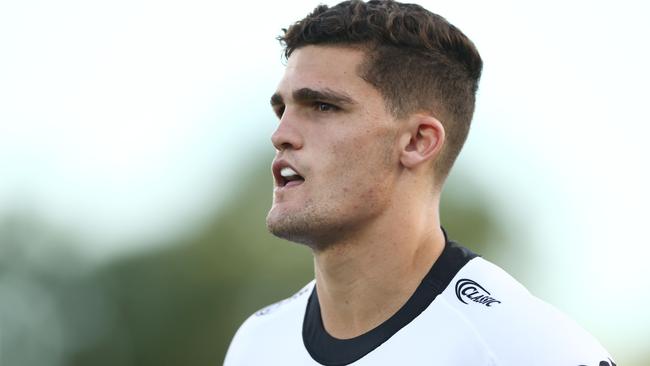
The Panthers have all the weapons they need — a Viliame Kikau/Waqa Blake edge is particular impossible to contain — but where they’ve fallen down in the past is a lack of attention to detail. More than any other team bar the truly psychotic Canberra Raiders, Penrith have lived on rugby league’s ragged edge. The wild comeback wins and last second escapes of years past are the mark of a wonderfully entertaining team but glass cannons don’t win premierships. There can be no more 71-point shootouts with the Raiders, no more last second escapes against teams they should beat like the Titans and the Sea Eagles. Consistency is a boring word in rugby league, but there’s a reason it’s what every coach craves.
What Cleary has been able to bring to all the successful teams he’s coached has been defensive resolve and that’s exactly what Penrith need to go to the next level. In 11 full seasons with the Warriors, Panthers and Tigers Cleary’s teams finished eighth or better in terms of fewest points conceded seven times.
They were in the top five defensive sides five times. The team he piloted to the top four and the preliminary final had the fifth best defence in the league and last year Cleary nearly steered the Tigers to an unlikely finals berth on the back of the sixth best defence in the competition. Imagine what he can do with Penrith’s raw talent thrown into the mix?
Transforming Penrith into something other than next year’s team is a challenge in and of itself. With Merrin and Corey Harawira-Naera leaving the forward depth isn’t what it was and the club will rely heavily on the likes of Kaide Ellis, Jack Hetherington and Moses Leota. There’s pressure on James Tamou to offer support to Reagan Campbell-Gillard and on hooker Sione Katoa to turn the flashes of ability he’s shown into something more substantial. The full impact of the ongoing sex tape scandal remains to be seen.
But for all these challenges, the Panthers are asking Cleary to do a job he’s not only done before, but that he’s done in Penrith before.
The wheels have kept turning, but the Panthers could, at last, be ready to race down the road.
Best XVII: 1. Dylan Edwards 2. Josh Mansour 3. Waqa Blake 4. Dean Whare 5. Dallin Watene-Zelezniak 6. James Maloney 7. Nathan Cleary 8. Moses Leota 9. Sione Katoa 10. Reagan Campbell-Gillard 11. Viliame Kikau 12. Isaah Yeo 13. James Fisher-Harris. Interchange: 14. Wayde Egan 15. Jack Hetherington 16. Kaide Ellis 17. James Tamou
State of note: Penrith have been to one preliminary final in the last 14 seasons
The big question: What kind of player can Sione Katoa be?
Katoa was a quiet achiever at Penrith last year. Following Peter Wallace’s retirement he was thrust into the starting hooker role with just 18 NRL matches and two starts to his name. The Tongan international improved the team with his direct running and by season’s end he was locked in as the top rake option.
The challenge now for Katoa is to take his game to the next level and that mainly refers to his running game. Katoa averaged just 18 run metres per game last year and 2.2 runs — he doesn’t have to turn into Damien Cook but it would be of tremendous benefit if he could engage the markers more often. With the nippy Wayde Egan keeping him honest, a lot of Penrith’s potential improvement in 2019 may rest with the talented Katoa.
Breakout player: Moses Leota
Last year Tamou had his best season as a Panther and a lot of it had to do with his move to the bench and the rise of Leota, a Kiwi hard-arse who plays like he’s carved out of stone. Leota rose through the ranks at Penrith and began to make his mark as a first-grader last year before injury halted his progress. Nevertheless, he still managed 20 games and 2019 shapes as a big season for the 23-year old.
Leota is yet to average more than 30 minutes a match in his three-season career — look for him to earn more time and more responsibility this year. The talented New Zealander may even earn a starting spot given how well Tamou worked off the pine last year.
6TH — MELBOURNE STORM
2018 finish: 2nd
It’s going to end for Melbourne one day.
One day Cameron Smith will retire and Craig Bellamy will decide he doesn’t want to do this anymore and the Storm will go from being the greatest success story in 21st century rugby league to just another team.
They won’t be able to take players made of raw marble and turn them into sculptures of rugby league excellence anymore. They’ll lose what makes them special and they’ll start missing the finals and they’ll be just like everyone else.
It’s going to happen at some point in the future, that’s a certainty, an irrefutable law of the universe. Nobody wins forever. But it won’t be this year and it won’t be as long as Bellamy and Smith are around — that’s as close to a certainty as it gets in rugby league, a universe they have bent to their wills.
Pre-season predictions are a hairy business because there’s so many variables in rugby league but Melbourne are the exception to most rules of the universe. The last time they missed the finals was in 2010 and they’ve never missed out under Bellamy on their own merits. The names and the faces keep changing and Melbourne keep on winning,
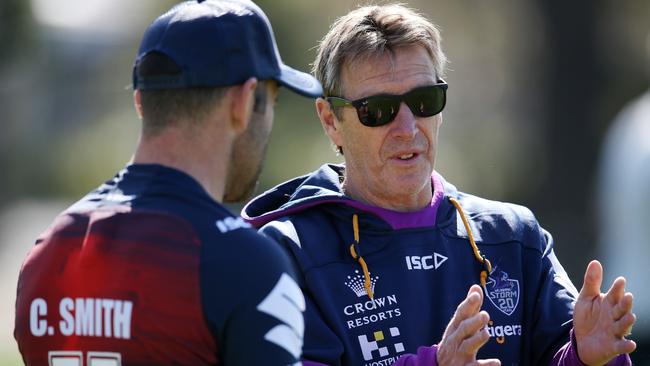
Because Smith and Bellamy have so long been Melbourne’s face — with Cooper Cronk and Billy Slater filling out the Mt Rushmore — it’s easy to overlook just how much turnover they’ve been through. Smith, for example, is the last player left at the club who played during the salary cap punishment season in 2010. There’s only three guys left from the 2012 grand final team — Smith, Jesse Bromwich and Will Chambers. Even the change from the 2016 grand final has been dramatic — just eight players who took the field that day remain.
One of the secrets of Melbourne’s success isn’t a secret at all, it’s just hard to pull off. They never stop trying to improve their roster and they can find things in players that nobody else can see. They turn unformed clay into sculptures of rugby league excellence and it was all built around the existing framework.
Even when the foundational places are replaced Melbourne have continued to bring the NRL to heel. After 2010 they lost Greg Inglis, Ryan Hoffman, Brett Finch, Aiden Tolman, Brett White and Jeff Lima all at once and rebounded with a minor premiership and a premiership in the next two years. They lost Billy Slater to injury for two years and in those years they made a prelim and a grand final.
Last season they lost Tohu Harris and Jordan McLean, two international forwards, as well as Cooper Cronk, the best halfback in the world, and they still kept going. They spent an entire season changing their halfback every few weeks and they still nearly won it all.
It’d be outrageous if it wasn’t so brilliant.
It used to be trendy to pick Melbourne to miss the finals. It has to end sometime, why couldn’t it be now? Not many people do that anymore. Betting against the infrastructure, against the best coach of the 21st century and one of the greatest collection of talents in the sport’s history, was an easy way to cop a loss.
But it has to end because everything does. Melbourne’s end won’t be sudden. They won’t go from grand final contention to wooden spooners in the space of a single season. It’ll be slow and steady and they’ll fight it every step of the way.
As well as Melbourne have been able to deal with the loss of Cronk, the replacements they’ve lined up for him and Slater are far from slam dunks.
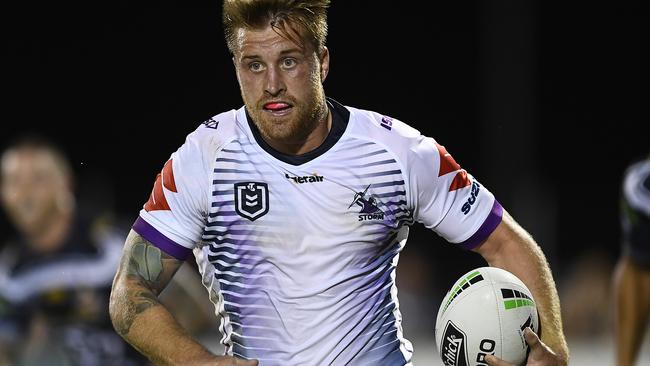
Cameron Munster is a very good five-eighth, one of the best in the league, but at fullback he could be one of the best players in the entire sport. He can’t play fullback though because they need him in the halves and they have Jahrome Hughes and Scott Drinkwater, two excellent up and coming fullbacks in their own right, waiting in the wings.
Munster will be good at five-eighth this season and Hughes will be good at fullback, but it’s still an awkward fit given they need to replace Slater, who by the end of his career did so much good work as a first receiver.
So much of Melbourne’s success with Cronk and Slater was built around defence, kicking and execution. Munster, Hughes and Croft are all good players but they can’t direct the team the same way Cronk and Slater did and that’s not a slight on anyone because it’s doubtful anyone could. Slater never lost his running game but by the end his distribution was just as great a weapon and Cronk’s facilitation was one of his best attributes.
Munster, Hughes and Croft are all runners first and passers second. They all run well, and they can all throw a pass to be sure, but the former is the greatest weapon for all three. Does this mean Melbourne move away from the sparkling backline moves of the past? The wrap around work with the second rowers, the out balls and in balls with runners knifing through the ruck, can they still work with one pilot flying the plane? Do we see a different style of Storm in 2019? Or will Bellamy do it again, turn one thing into another and have us all shaking our heads come September?
These are the kind of existential questions Bellamy’s Storm have never had to deal with before. Their framework hasn’t had to be replaced in such a fundamental way. They have stood astride the rugby league chaos forever with the rest of the league breaking against them like waves on a rock. As everything else has changed, Melbourne have remained but even they can’t stay the same forever.
The end of the Bellamy era has never been closer but they’ll be great until they’re not anymore and there’s too much pride, poise, wisdom and experience for them to fall too far or too fast.
Best XVII: 1. Jahrome Hughes 2. Suliasi Vunivalu 3. Will Chambers 4. Curtis Scott 5. Josh Addo-Carr 6. Cameron Munster 7. Brodie Croft 8. Jesse Bromwich 9. Cameron Smith 10. Nelson Asofa-Solomona 11. Felise Kaufusi 12. Joe Stimson 13. Dale Finucane Interchange: 14. Brandon Smith 15. Christian Welch 16. Kenny Bromwich 17. Tui Kamikamica
State of note: In every season after they’ve lost a grand final Melbourne have won the premiership
The big question: Can Brodie Croft lock it down?
The jury is still out on Croft, who has a lot of game in him but is still tremendously inexperienced. Croft was in and out of the first grade side last season, as a 21-year old is expected to be, before he was recalled for the finals. The grand final against the Roosters was his 17th game in the top flight.
There’s nothing wrong with Croft’s progress or development — he’s yet to have a full season in first grade after all — but Melbourne need him to be the man and they need him to do it now.
Word out of Melbourne is that Smith himself will spend a lot of time as a first receiver this season which seems the right call — with so much inexperience around him Smith will have to direct like never before.
Breakout player: Tui Kamikamica
The Storm have turned finding young forwards into a cottage industry and Fijian hardman Kamikamica could be the next cab off the rank. He has just seven first grade matches to his name but nobody makes it in the Melbourne forwards if they’re not fit, mobile and capable of doing their role every single week.
Some of Kamikamica’s best work has come with Fiji — he’s played nine Tests for the Bati and was exceptional in their run to the World Cup semi-finals two years ago. Expect the 24-year-old to mainly work off the bench as an impact player, a job the athletic Taveuni product can do and do well.
5TH — NORTH QUEENSLAND COWBOYS
2018: 13th
There were three weeks in 2017 when we got a glimpse of what North Queensland could be in a post-Johnathan Thurston world.
Their three finals wins two years ago — against the Sharks, Eels and Roosters — don’t give us a full picture but it was clearer than ever before.
It’s not realistic to expect games like that every week. Michael Morgan looked every bit Thurston’s heir and Jason Taumalolo bent the curve of what a forward was capable of.
After three outstanding finals performances in a row it all fell a bit flat in the grand final — the Cowboys were stomped by a Melbourne team who dominated the entire season — but the silver lining of the defeat was what it showed for the future.
Thurston is a once in a lifetime type player and plenty of clubs have fallen over themselves trying to replace their greatest ever halfbacks. Think about the Raiders post Ricky Stuart, Parramatta after Peter Sterling, the Tigers after Scott Prince or the Broncos after Allan Langer. It can take years, or even decades, for a club to find their next halfback messiah.
Even when it seems to be all lined up things can go astray. When Andrew Johns retired due to a neck injury in 2007 Jarrod Mullen was supposed to take over — he’d showed so much ability the previous season and was considered a no-brainer. But it never happened for Jarrod Mullen like it was supposed to because there are no guarantees in rugby league.
Morgan is far more accomplished now than Mullen was then and he struggled to go back to being Thurston’s second fiddle last season. How can they stay down at the farm once they’ve seen Paris? North Queensland had a myriad of issues last season and Morgan’s inability to gel with Thurston was one of them.
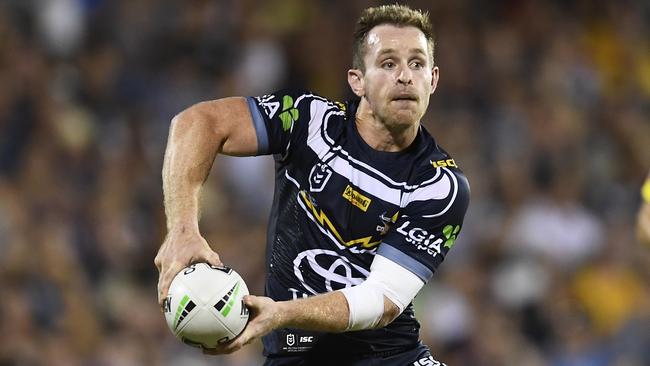
He played just 10 games, looked fully fit in none of them, and was shunted back to fullback for three forgettable matches before a pec injury ended his season.
But now he’s back, as captain no less, and second to nobody. This is Morgan’s team and the last time he was given a team of his own he helped engineer one of the great finals runs of the 21st century.
He doesn’t have to be like that for North Queensland to be successful this year, but they need him to take over Thurston’s role in the side as a kicker and organiser while retaining the running game that makes him so dangerous.
Morgan has given every indication he’s capable of doing so — the way his kicking game developed over that run in 2017 was quite remarkable — but plenty of talented players have failed to do so in a similar situation. After all, he is replacing the greatest player the Cowboys have ever had, maybe the greatest they’ll ever have. That’s enough pressure to get to anyone.
If Morgan is North Queensland’s heart and brain then Taumalolo is almost every other body part, especially most of the muscles.
There has been some stuff in the water that Taumalolo endured a forgettable season last year and that’s just not true — he averaged 63 minutes, 177 metres and 17.4 average runs per game. All three numbers are higher than what he recorded in his 2016 Dally M season.
The Tongan colossus is rapidly putting together a resume that can stand with any forward in rugby league history. He is a one-man army and with the retirement of Thurston and Slater the race for best player in the world must include Taumalolo.
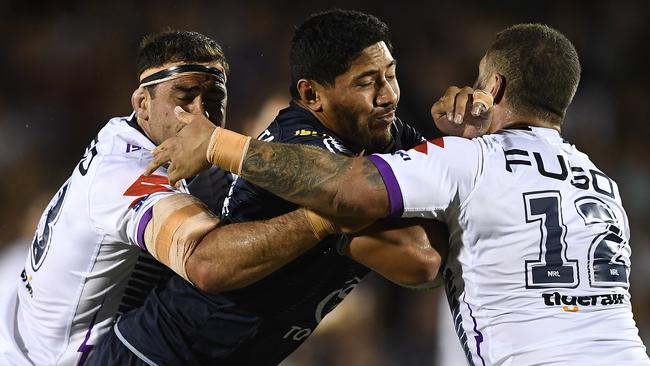
But no man is an island, much less a forward pack, and the root of any yardage problems North Queensland endured last season came after Matt Scott and Jordan McLean were rubbed out for much of the season with injury.
Once the trio came back they were a serious problem and a major reason why the Cowboys went 4-2 in their last six with a win over Brisbane and narrow losses to the Sydney Roosters and Cronulla. Taumalolo, Scott, McLean and John Asiata are a good enough quartet of middle forwards to hang with just about anyone but throw in Josh McGuire, noted hardass and incumbent Queensland and Australian lock, and you’ve a pack of roughriders who are hard as a coffin nail and love nothing better than running over the top of things, people and small buildings.
With McGuire joining an already strong pack it should let Paul Green lean less heavily on Taumalolo and ensure at least two world class middle forwards are on the field at all times. Scott may be getting on but he’s still got what it takes — the old fella racked up more than 120 metres in five of his last six games of 2018.
It is confusing then to hear of Green’s dalliance with playing Taumalolo on an edge. The theory behind the plan is understandable — Taumalolo can play the first 20 minutes on the edge before moving into the middle following the first interchange of either McLean, Scott or McGuire — but the constantly shifting combinations aside, it just doesn’t seem like a great idea to move the best forward in the league away from the position he’s best at.
Regardless of who is on the bench — Scott or McLean or McGuire or Coen Hess — North Queensland will have five Origin/Test forwards in their team, a ludicrous arrangement. A forward pack like that is good enough to carry a team through just about anything so North Queensland’s title hopes will very much count on what they can get from their backs.
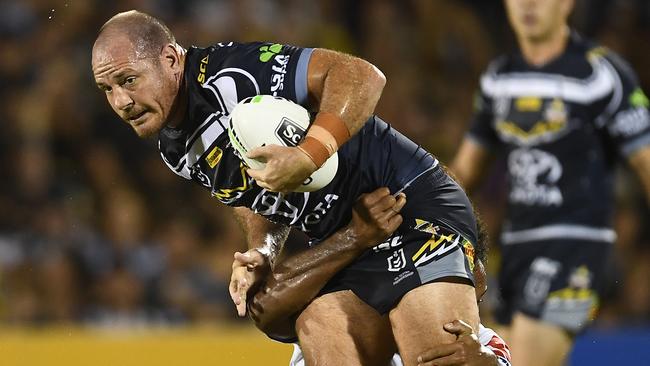
Here, we find the root of the club’s problems from last season — the points dried up. The system which had looked so good from 2014 to 2017 (where the fullback was second receiver on the left, the five-eighth was second receiver on the right and the halfback was first receiver on both sides) looked antiquated and slow.
The backline of Kyle Feldt, Kane Linnett, Justin O’Neill and Antonio Winterstein — the same outside backs from the grand final — lacked speed and penetration all year. Feldt was the only one of the four who improved from the year before and change, through Winterstein’s retirement and Linnett’s departure, was inevitable.
North Queensland are still light on centres — either Ben Hampton or Enari Tuala will partner O’Neill — but Nene Macdonald is a good purchase on the left wing. The Papua New Guinea international gives the Cowboys the workrate they love in their backs while also providing more speed and explosiveness than they’ve had in the past.
Most of these season previews are built on the expectations of the known and the predictions of the unknown. The Cowboys have known and proven commodities on their hands and that alone should be enough to show that last season was an aberration.
Best XVII: 1. Jordan Kahu 2. Kyle Feldt 3. Ben Hampton 4. Justin O’Neill 5. Nene Macondald 6. Jake Clifford 7. Michael Morgan 8. Josh McGuire 9. Jake Granville 10. Jordan McLean 11. Gavin Cooper 12. Coen Hess 13. Jason Taumalolo 14. Kurt Baptiste 15. Matt Scott 16. John Asiata 17. Scott Bolton
State of note: North Queensland’s 449 points scored last season was their second lowest amount since Johnathan Thurston joined the club in 2005.
The big question: Can Jordan Kahu pull it all together?
Before Ben Barba was sacked the Cowboys were my pick to win it all. On paper, the former Dally M winner was a perfect signing. He gave the Cowboys the speed they needed with much of the savvy ball-playing that made Lachlan Coote such a big success during his time with the club. He would have been a big success in their system, of that there seems little doubt.
But Barba is gone before he was really here and the Cowboys had to scramble to land Jordan Kahu from Brisbane. Kahu is a valuable and reliable player and his ability to play all three backline positions make him an asset for any squad but there are doubts as to how he’ll go as a fullback all season.
Kahu will be safe under the high ball and strong defensively and positionally but does he have the ball-playing skills to make an impact from the back, let alone the speed and incisive running North Queensland need? Options are thin on the ground at the club so Kahu will get first crack but if the Cowboys don’t start well it wouldn’t be surprising if he was the first man moved.
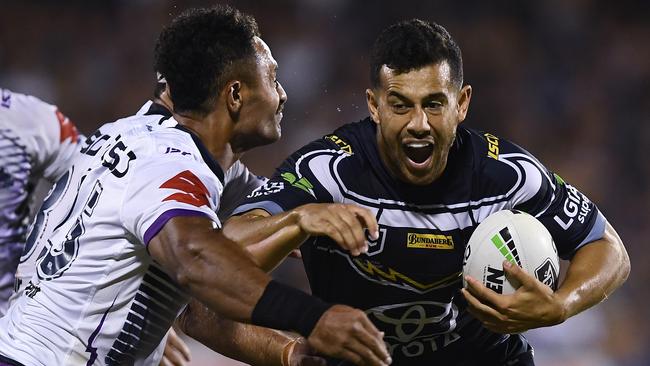
Breakout player: Jake Clifford
Green will start the season with Te Maire Martin as Morgan’s halves partner, which is understandable. Martin has been good for North Queensland ever since he arrived from the Tigers and he played well down the stretch last year, at times in the unfamiliar role of fullback. He helped the club to the 2017 grand final and his selection shows the strength and weakness of player loyalty.
One of Green’s strongest traits as a coach is that he backs the guys who have done the job for him before. Martin is an NRL quality five-eighth without a doubt but Jake Clifford could be very special. The Cairns junior played six NRL matches last year and his improvement between the first and the last was immense. He’s one of the best prospects in the game and his ability to organise, as well as his strong kicking game, make him a better foil for Morgan.
At the start of 2015, Green began the season with Morgan at fullback, Robert Lui at five-eighth and Thurston at halfback. It had taken them to the second week of the finals the year before after all, and Lachlan Coote was coming off a knee reconstruction. After a winless start to the season Green made the change, switched Morgan to the halves and brought in Coote. The Cowboys won the competition.
Could such a change affect such a dramatic result twice? Unlikely. But Clifford can take this team to another place.



